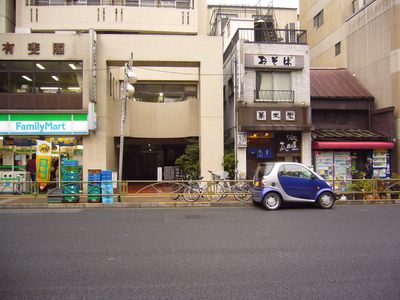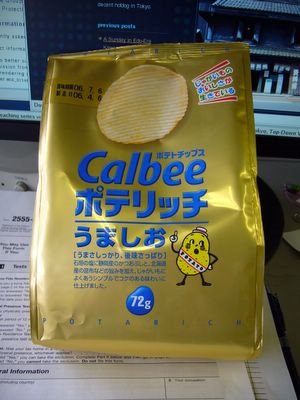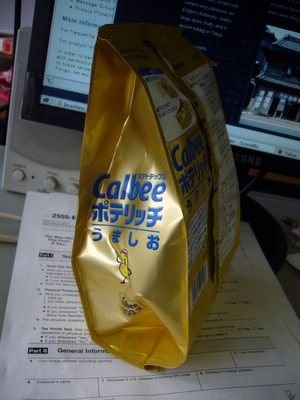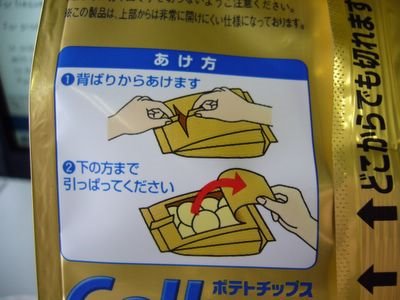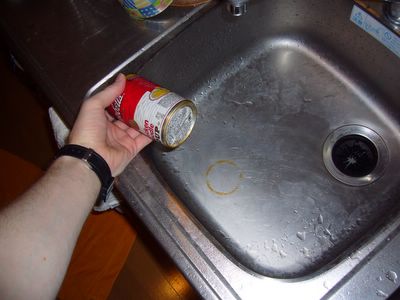The following text is from a pamphlet in English, from the Kawagoe City tourist information center, prepared by Barry Duell. (Not me--I just retyped it here because it's a good read.)
Kurazukuri - Clay-Walled StoresIn the past it is said there were more than 200 clay-walled stores in Kawagoe City. Now there remain only about thirty. However the 10 or so facing the main street as it passes through the north part of Kawagoe provide a scene from the past found in few cities in Japan today. To preserve these few remaining "kurazukuri," clay-walled stores, 16 of them were designated Cultural Properties by Kawagoe City in 1982.

One of the oldest clay-walled stores in Kawagoe was built in 1792. Known today as the Ohsawa family dwelling, it was designated an Important Cultural Property by the federal government in 1971 because it represents one of the few such buildings left in Japan from that period.
Clay-walled construction was used both to make a structure fireproof and to make it secure against intruders. Such a method of construction was used in Japan not only to make kurazukuri, but also to make storehouses, examples of which can be seen in and around Kawagoe.



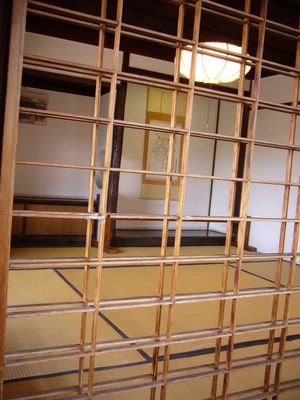

Most of the clay-walled stores left in Kawagoe were built during the Meiji period (1868-1912). It was during that period, in 1893, that a large fire destroyed a major portion of central Kawagoe. The few buildings that survived were of clay-walled construction, including the kurazukuri now called the Ohsawa family dwelling, which encouraged the merchants in the area to rebuild in this style.

The architectural flavor of these shops reflects the style popular in Edo, now [called] Tokyo. In fact, Kawagoe today has the largest concentration of Edo-style kurazukuri remaining in the Kanto area. Many kurazukuri in Tokyo were destroyed during the Great Kanto Earthquake and resulting fire in 1923.
To build a kurazukuri, large stones were first pounded into the ground to form a solid foundation. Upon this was built a heavy frame of wood with bamboo lathing. The walls were made about 20 cm (eight inches) thick using a mixture of clay and fibrous material, and were protected from the weather by an outer layer of plaster. It took two or three years to build a kurazukuri partly because of the time necessary to properly dry the clay walls. The crowning feature of a kurazukuri was the "devil tiles" that were placed on each end of the roof ridge. These, too, were often elaborate. Merchants showed their wealth by building as large and fancy a structure as they could afford.


Most of the Kawagoe merchants that had clay-walled stores sold dry goods or cloth, or dealt in thread and silk cocoons. Other specialty shops sold such items as dyestuffs, "tabi" (Japanese-style socks that fit like mittens on the feet), fertilizer, grain, sugar, "sake" (rice wine) and soy sauce, tobacco, "geta" (wooden clogs), green tea, sweets, lumber, stationery, paper, metal goods, or charcoal.
Kawagoe's Kurazukuri Museum is housed in what used to be a tobacco wholesaler's shop. It was one of the first kurazukuri built after the Great Kawagoe Fire of 1893.

"Toki no kane" Bell Tower
Located near the Kurazukuri Museum is Kawagoe's "Toki no kane" Bell Tower which marks the time four times a day. The bell, now automated, rings at 6 AM, 12 noon, 3 PM, and 6 PM. It is said the bell tower was first built in the mid-seventeenth century by order of the Kawagoe "daimyo" or feudal lord. Located in what was then the center of Kawagoe, it kept the population informed of the time. The tower's bell was also used to warn the population of any fires spotted from atop the tower.
The tower was rebuilt in 1894, the year after the Great Kawagoe Fire of 1893 destroyed the earlier structure.
--prepared by Barry Duell

